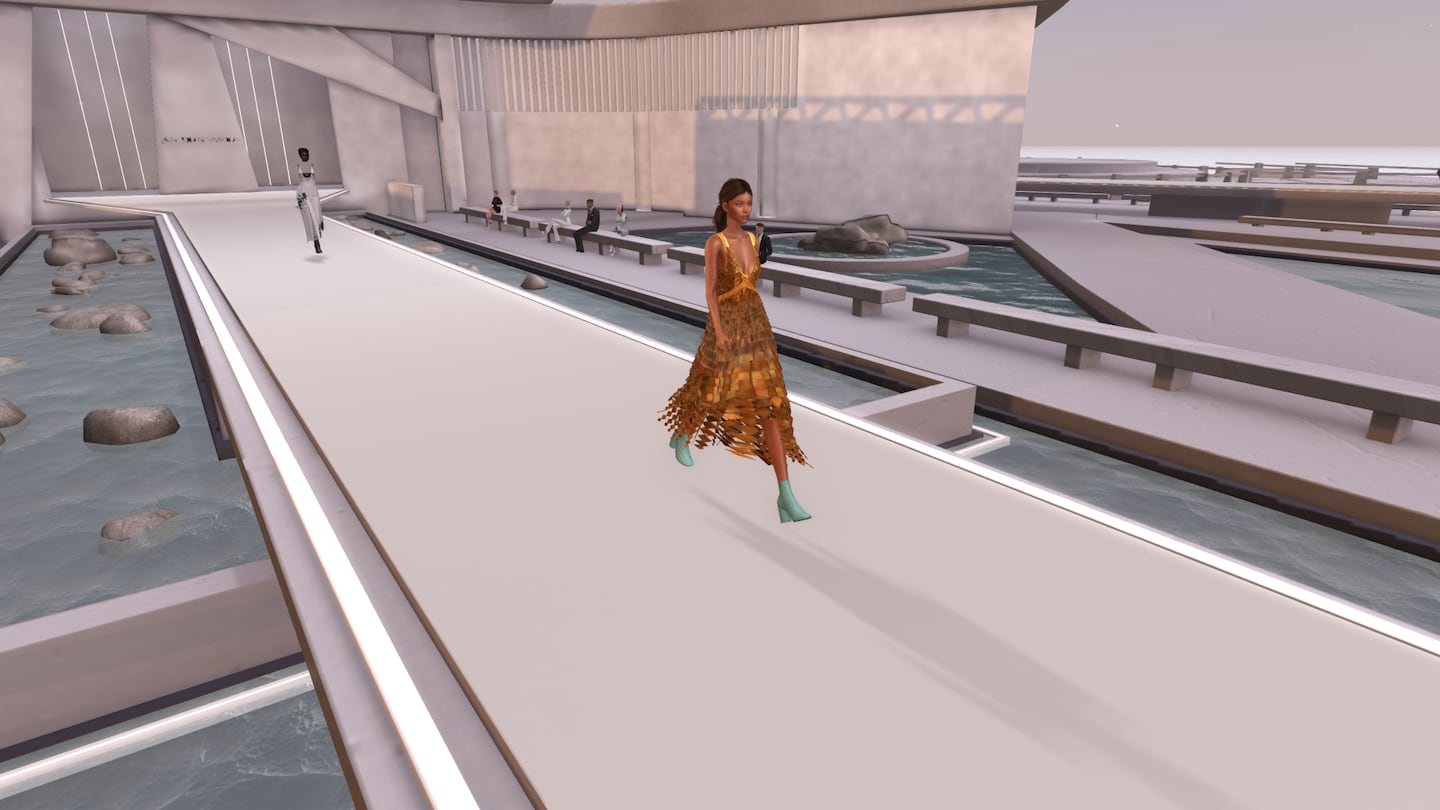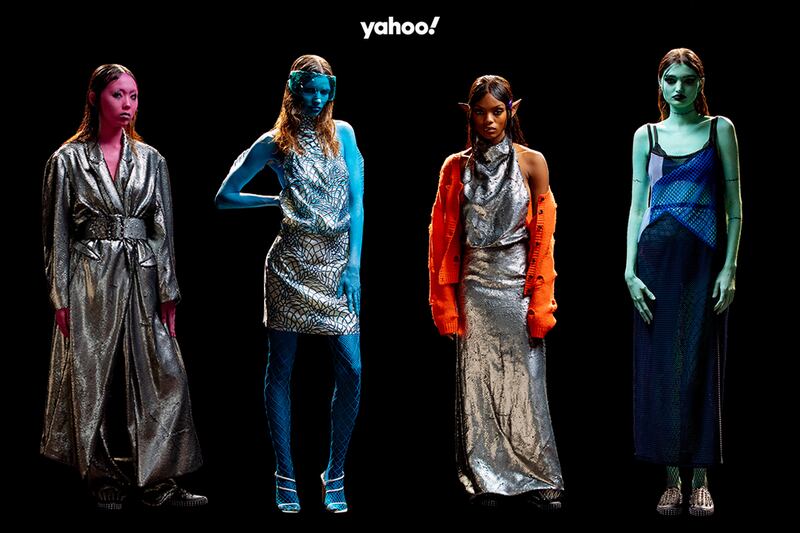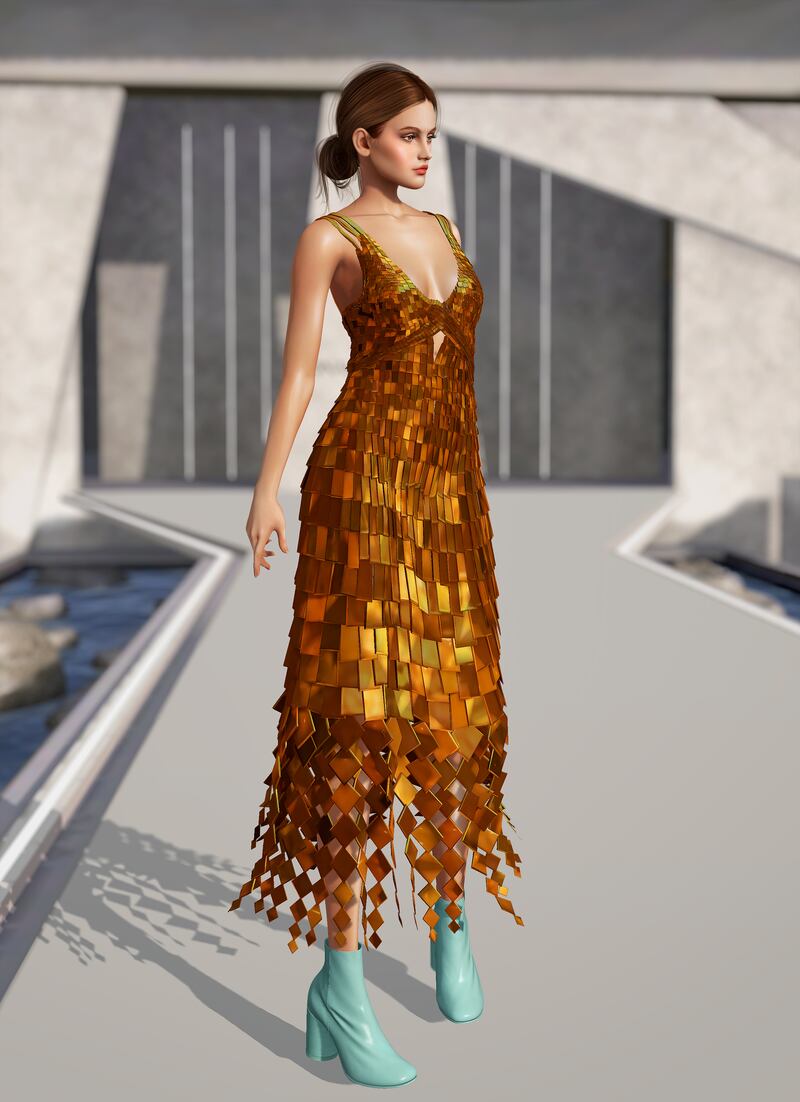
The Business of Fashion
Agenda-setting intelligence, analysis and advice for the global fashion community.

Agenda-setting intelligence, analysis and advice for the global fashion community.

It was inevitable that the metaverse would rear its head at New York Fashion Week, given all the hype around it in the past year.
Jonathan Simkhai, Maisie Wilen and Imitation of Christ — the conceptual fashion and art project founded roughly two decades ago — all worked around the concept in their latest collections, albeit in very different ways. Simkhai as well as Eckhaus Latta and Altuzarra also delved into the metaverse-adjacent category of NFTs.
What the disparate approaches shared, though, was a sense of trying to figure out fashion’s place in this emerging digital world, which doesn’t yet fully exist as technologists generally define it. Its foundations are still being laid, and brands are in the process of determining what works — and what doesn’t — with sometimes mixed results.
While they may see an opportunity in selling virtual clothing, for example, brands still generally make their money on sales of garments made from plain old fabric and thread and will for at least some time to come. One challenge they’re having to navigate is how to translate real-world clothes into digital versions that can stand up as the centrepiece of a virtual show while communicating the desirability of their physical source material.
ADVERTISEMENT
Simkhai, a fixture of the New York schedule, skipped an in-person show in favour of staging a runway show in Second Life, the online world launched in 2003. He was approached with the idea by Everyrealm, a group that has been buying and developing spaces in a number of virtual worlds. With the help of Blueberry, a digital wearables company founded by Mishi McDuff, who has a robust business selling in Second Life, they turned Simkhai’s physical fashion into virtual garments.
On the runway, it could be difficult to see the clothes in detail. At a distance, they felt flattened, in the way that far-off objects in a video game often can. Closer up, the intricacies were more visible, but for all the work that clearly went into them, both from Simkhai and his technology partners, they could still read as graphical approximations of clothes, rather than clothes themselves. Online games often have to compromise on detail in their imagery so that the gameplay is smooth and fluid even for users with slower internet connections or less powerful computers.

“This is the early days for metaverses,” said Julia Schwartz, co-founder of Everyrealm. “Kind of like dial-up-modem-internet days.”
While Second Life is not in the early stages itself, Schwartz and Katie Witkin, Everyrealm’s head of marketing, emphasised that they’re pioneering new territory by turning Simkhai’s real clothing into digital garments to be seen first online. Inevitably there will be some learning involved. The virtual clothes went up for sale in Second Life the day of the show and only the next day were flesh-and-blood editors and buyers able to see the physical collection by appointment. Six items will also go on sale as NFTs with different levels of rarity.
Imitation of Christ’s experience took the form of a video running through a series of virtual garments, with a second part set to debut during a planned Metaverse Fashion Week set to take place in March in the online world Decentraland.
At Maisie Wilen, the holograms of scaled-up, seven-foot-tall models inspired by Monster High, a line of fashion dolls by toymaker Mattel, looked extremely real as they moved around. Some pointed and laughed at the viewer, another cried and another got shocked with a jolt of electricity. The performances were so engaging that many who attended lingered longer than they might have for a conventional fashion show, whether to observe each model’s unique action or to take a selfie. Amid all the commotion, it could be easy to overlook the clothes.

Maisie Schloss, the brand’s designer, said she felt the format enhanced the clothing.
“It brings a humanity to the clothes that is even more expressed than just a model walking down a runway,” she said.
ADVERTISEMENT
The holographic assets are meant to have uses beyond the in-person presentation. They’re also available as AR for users at home to project into their living rooms and are meant to “live in the metaverse,” according to Yahoo, which was the official innovation partner of New York Fashion Week and worked with Schloss to create them.
Nigel Tierney, head of content for Yahoo Ryot Lab, said they used a volumetric-capture process involving 106 cameras for the task. The goal was “to really make sure we’re not only capturing the performance but the nuance of the garments, the fabric, so that way it’s represented in a meaningful way at the show itself but also for viewers at home.”
Though on the Maisie Wilen site, where the clothes are available for pre-order, the product pages opt for old-fashioned static photos of models wearing the clothes.
Old Desires Meet New Technologies
In the view of Everyrealm’s Schwartz, the aim of virtual presentations isn’t to replace real-world events but to complement them, giving artists and designers a chance to try things without the constraints of the real world. At the finale of Simkhai’s Second Life show, a dress of gold overlapping shingles shed pieces that resembled leaves falling.

“It’s giving a whole new life to the garments and a new level of exposure,” Simkhai told BoF prior to the show. “It’s just so exciting to not only sell my clothes in stores but also to give them so much more range and possibilities.”
Schloss spoke similarly of working with Yahoo.
“As soon as they said they could do holograms I was like yes,” she said. “I just thought it was such a cool and unique way to bring a collection to life and really make this surreal and fantastical experience.”
ADVERTISEMENT
One thing that isn’t new is the desire of brands and designers to find novel ways of presenting their collections. For years now, brands have been looking to technology that either lets them innovate on the standard runway show or at least bring it off the runway.
In 2015, for example, Tommy Hilfiger put VR headsets in stores to allow customers to experience its fall runway show that year. In 2017, it introduced AR as a way to make runway looks immediately shoppable. These moves would likely be marketed as metaverse plays today.
It raises the question of how much designers can do that is genuinely innovative. A show in Second Life, for instance, is something that could have been done five or even 10 years ago.
Some argue that one innovation changing the landscape is blockchain and NFTs, which allow shoppers to verify ownership of their digital goods. Blueberry’s McDuff believes another big change is the market for virtual items, which wasn’t nearly as mature a decade ago as it is today. She said Blueberry has sold more than 20 million wearables to date.
“We now know the future of fashion is partially digital,” she said. “The market needed to marinate on that for some time. And now is the right time. Now the communities are ready. Now the designers are ready to explore this space.”
 Opens in new window
Opens in new windowThere’s a land rush happening in virtual spaces, where developers are grabbing up real estate to build immersive, digital shopping districts they’re pitching as the future of e-commerce.
While announcing Facebook’s rebrand as Meta, Mark Zuckerberg offered his vision of the metaverse, and how we’ll dress in it.
What’s selling and who’s buying as fashion brands from Dolce & Gabbana to Rebecca Minkoff jump into the surging NFT market.

Marc Bain is Technology Correspondent at The Business of Fashion. He is based in New York and drives BoF’s coverage of technology and innovation, from start-ups to Big Tech.
The extraordinary expectations placed on the technology have set it up for the inevitable comedown. But that’s when the real work of seeing whether it can be truly transformative begins.
Successful social media acquisitions require keeping both talent and technology in place. Neither is likely to happen in a deal for the Chinese app, writes Dave Lee.
TikTok’s first time sponsoring the glitzy event comes just as the US effectively deemed the company a national security threat under its current ownership, raising complications for Condé Nast and the gala’s other organisers.
BoF Careers provides essential sector insights for fashion's technology and e-commerce professionals this month, to help you decode fashion’s commercial and creative landscape.